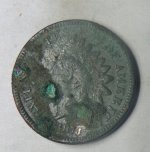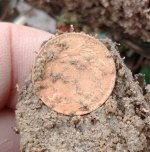allen
Gold Member
- Jul 16, 2004
- 20,059
- 212
- Detector(s) used
- ace 250
- Primary Interest:
- Metal Detecting
ground gets wet, opens up a
bit and coin starts going down,
over a few years it gets deeper!
bit and coin starts going down,
over a few years it gets deeper!






